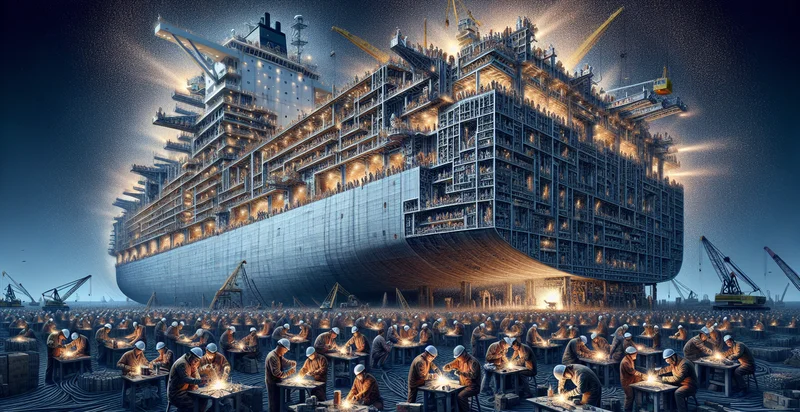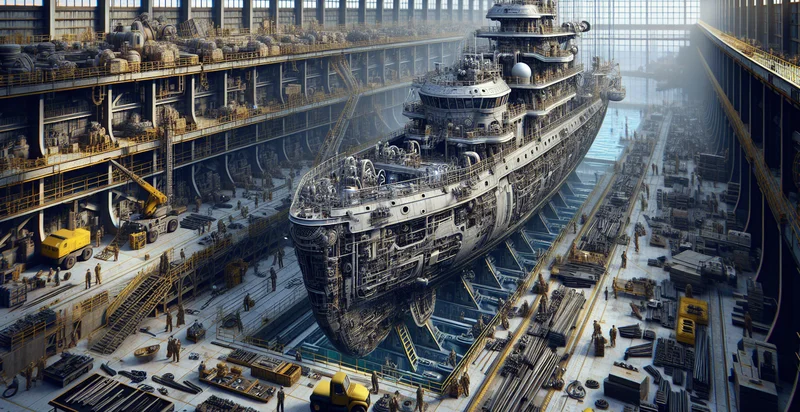Identify research vessel make
using AI
Below is a free classifier to identify research vessel make. Just upload your image, and our AI will predict what type of research vessel it is - in just seconds.

Contact us for API access
Or, use Nyckel to build highly-accurate custom classifiers in just minutes. No PhD required.
Get started
import nyckel
credentials = nyckel.Credentials("YOUR_CLIENT_ID", "YOUR_CLIENT_SECRET")
nyckel.invoke("research-vessel-make", "your_image_url", credentials)
fetch('https://www.nyckel.com/v1/functions/research-vessel-make/invoke', {
method: 'POST',
headers: {
'Authorization': 'Bearer ' + 'YOUR_BEARER_TOKEN',
'Content-Type': 'application/json',
},
body: JSON.stringify(
{"data": "your_image_url"}
)
})
.then(response => response.json())
.then(data => console.log(data));
curl -X POST \
-H "Content-Type: application/json" \
-H "Authorization: Bearer YOUR_BEARER_TOKEN" \
-d '{"data": "your_image_url"}' \
https://www.nyckel.com/v1/functions/research-vessel-make/invoke
How this classifier works
To start, upload your image. Our AI tool will then predict what type of research vessel it is.
This pretrained image model uses a Nyckel-created dataset and has 30 labels, including Aroo, Austal, Baker, Baton, Cutter, Daewoo, Damen, Fenwick, Generale and Gulftainer.
We'll also show a confidence score (the higher the number, the more confident the AI model is around what type of research vessel it is).
Whether you're just curious or building research vessel make detection into your application, we hope our classifier proves helpful.
Related Classifiers
Need to identify research vessel make at scale?
Get API or Zapier access to this classifier for free. It's perfect for:
- Vessel Fleet Management: Research vessels often belong to large fleets managed by organizations conducting marine research. An identifier that classifies the make of a vessel can help fleet managers streamline operations, schedule maintenance, and make data-driven decisions about resource allocation based on the type of vessels deployed.
- Compliance and Regulatory Reporting: Agencies tasked with environmental protection and compliance can utilize a vessel make identifier to ensure that research vessels meet industry standards. By automatically classifying vessels, these agencies can generate accurate reports, track compliance, and facilitate audits more effectively.
- Insurance Risk Assessment: Insurance companies can leverage false image classification to assess risk associated with different makes of research vessels. By identifying the make, insurers can better understand the historical performance and safety records of specific vessel types, enable tailored premiums, and streamline the underwriting process.
- Market Analysis for Shipbuilders: Shipbuilding companies can analyze the prevalence of various research vessel makes through image classification. By gathering data on market trends, they can make informed decisions on design improvements and new vessel developments that cater to current demands and research needs.
- Safety and Emergency Response Planning: Maritime safety organizations can benefit from identifying the makes of research vessels during incident response planning. This classification provides vital information regarding vessel capabilities and safety features, allowing responders to tailor their strategies effectively during maritime emergencies.
- Research Collaboration Opportunities: Academic and research institutions can use vessel make identifiers to facilitate collaboration between organizations that own similar or complementary research vessels. By classifying makes, they can identify potential partnerships for joint expeditions and resource sharing, driving innovation and scientific discovery.
- Environmental Impact Studies: Environmental researchers can utilize the vessel make classification to study the ecological impact of different research vessels. This analysis can inform decisions regarding vessel types that have lower emissions or less environmental disruption, ultimately contributing to sustainability efforts in marine research.


